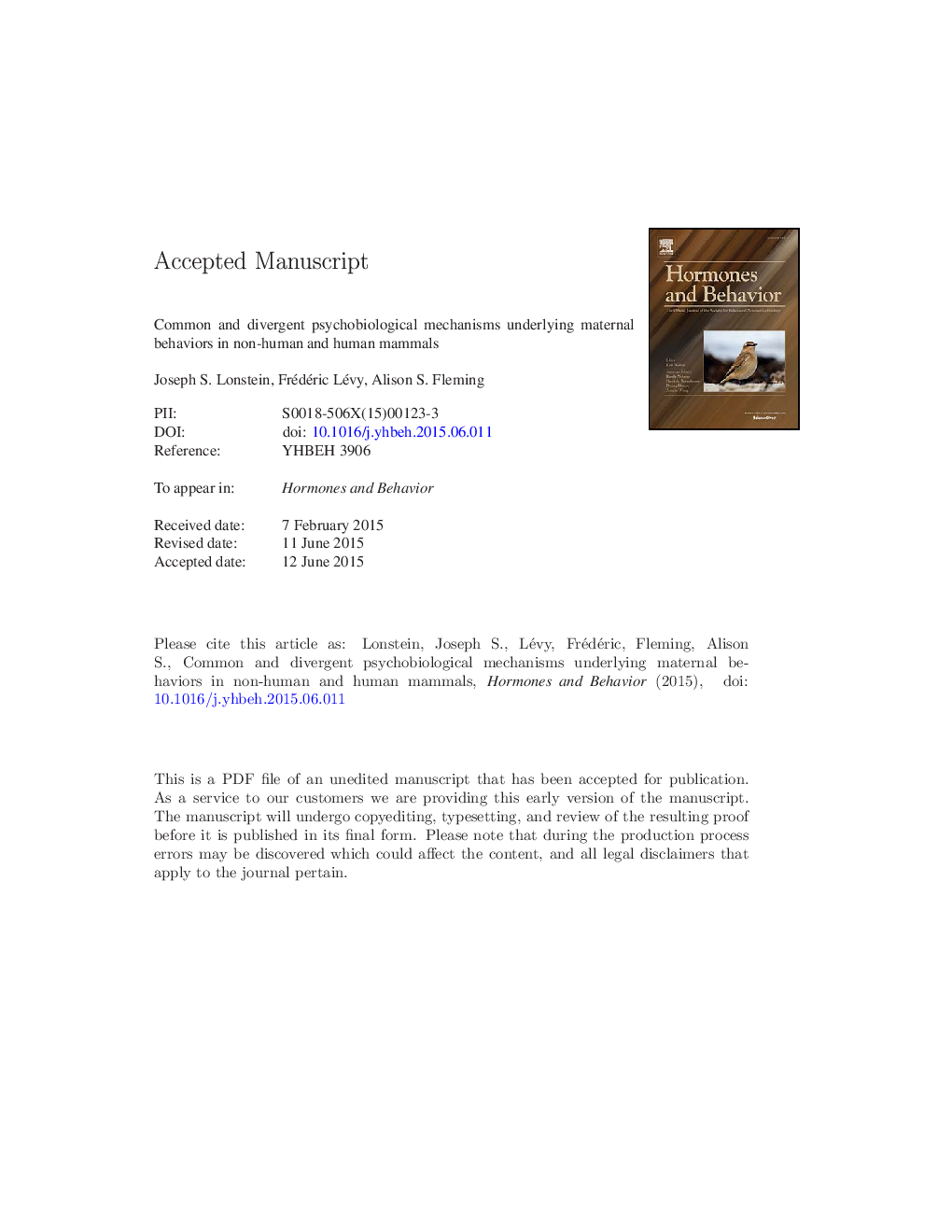| Article ID | Journal | Published Year | Pages | File Type |
|---|---|---|---|---|
| 6794814 | Hormones and Behavior | 2015 | 117 Pages |
Abstract
Maternal interactions with young occupy most of the reproductive period for female mammals and are absolutely essential for offspring survival and development. The hormonal, sensory, reward-related, emotional, cognitive and neurobiological regulators of maternal caregiving behaviors have been well studied in numerous subprimate mammalian species, and some of the importance of this body of work is thought to be its relevance for understanding similar controls in humans. We here review many of the important biopsychological influences on maternal behaviors in the two best studied non-human animals, laboratory rats and sheep, and directly examine how the conceptual framework established by some of the major discoveries in these animal “models” do or do not hold for our understanding of human mothering. We also explore some of the limits for extrapolating from non-human animals to humans. We conclude that there are many similarities between non-human and human mothers in the biological and psychological factors influencing their early maternal behavior and that many of the differences are due to species-characteristic features related to the role of hormones, the relative importance of each sensory system, flexibility in what behaviors are exhibited, the presence or absence of language, and the complexity of cortical function influencing caregiving behaviors.
Keywords
Related Topics
Life Sciences
Biochemistry, Genetics and Molecular Biology
Endocrinology
Authors
Joseph S. Lonstein, Frédéric Lévy, Alison S. Fleming,
